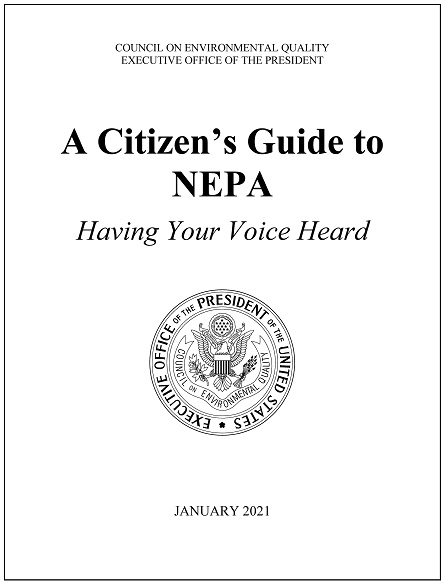
National Environmental Policy Act
Most of the actions the BLM takes to implement its land-use plans are reviewed under the requirements of the National Environmental Policy Act (NEPA), through various documentation of the potential environmental effects, including:
Categorical Exclusions (CXs, or CEs): Categorical exclusions are actions which the BLM has identified do not significantly affect the quality of the human environment. These include installing protective grates on abandoned mines or permitting temporary livestock feeding during periods of drought. In some cases, Congress has directed the use of CXs for activities such as drilling for oil and gas on a site which has hosted similar efforts in the past five years. The Fiscal Responsibility Act of 2023 allows Federal agencies to adopt CXs developed by another federal agency under certain conditions.
Determinations of NEPA Adequacy (DNAs): If a review shows that the BLM has already covered a proposed action in existing effects analysis, it can rely on a Determination of NEPA Adequacy (DNA). These determinations also address conformance with approved land use plans. The BLM documents its DNAs through a worksheet that is kept with the project file.
Environmental Assessments (EAs): An EA is a document that identifies environmental effects of a proposed action and determines their significance. If it seems unlikely that a proposed action will have a significant effect on the environment, the BLM will prepare an EA. An EA describes the purpose and need for a proposed action, describe the affected environment, discuss alternatives to a proposed action, and analyzes environmental impacts and ways to mitigate them. If the EA shows that the proposed action does not have a significant effect on the environment, it will issue a Finding of No Significant Impact (FONSI). In some cases, if the analysis completed during an EA shows that the proposed action will have a significant effect on the environment, the BLM will complete a full EIS.
Finding of No Significant Impact (FONSI): If, after completing an EA, the BLM determines that an action will not have a significant effect on the environment, a Finding of No Significant Impact (FONSI) is prepared. This determination confirms that an environmental impact statement is not required. The BLM documents its FONSI in a Decision Record.
Environmental Impact Statements (EISs): An EIS is a comprehensive document that analyzes the impacts of a federal action that will have a significant effect on the human environment. An EIS describes the purpose and need for a proposed action, describes the affected environment, discusses alternatives to a proposed action, and analyzes environmental impacts and ways to mitigate them. An EIS is typically a longer document than an EA, and it offers more opportunities for public comment or involvement than an EA. An EIS has more procedural requirements, and therefore takes more time to prepare on average than an EA. Each EIS is completed with a Record of Decision, which documents the BLM’s decision as to how it will or will not move forward with a proposed action.

